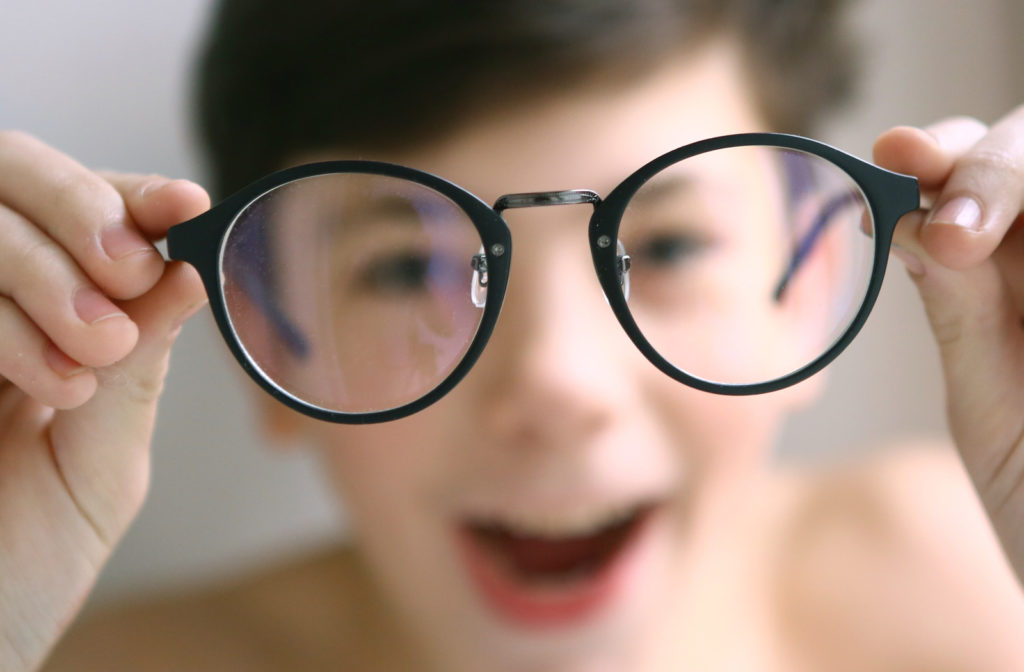If you’ve ever browsed through our comprehensive library of eye care blogs, you’ve probably noticed that our team at the Eye Care Center of Colorado Springs is no stranger to helping patients manage their myopia progression.
What makes myopia so important to us is that it often starts developing in children by the time they enter school, and some cases can start as early as 3 years old!
As they grow up, their myopia can progress and lead to blurrier and blurrier vision over time. Not only can myopia make it difficult to read from the class board or take part in sports and games, it can also lead to other issues like regular headaches and eye strain.
But is there a point where myopia progression stops? And if there is, how blurry can someone’s vision become before their myopia finally halts? Let’s look at myopia progression and how it can affect both children and adults!
How Myopia Progresses
Myopia, more commonly known as nearsightedness, is one of the most common refractive errors in the world. It’s so common that researchers believe nearly half of the planet will have some degree of myopia by 2050!
The risk of developing myopia is different for everyone, but some of the most common factors include family history or spending too much time indoors.
Myopia usually develops early in life, either when the eye grows too long or if the cornea becomes too steep. When this happens, light entering the eye focuses in front of the retina instead of on it, resulting in blurry distance vision.
The earlier a person develops myopia, the more the condition can progress as they grow up. In most cases, though, myopia progression tends to slow down or stop by the age of 20, but some studies have shown that it can progress for much longer (sometimes until the age of 35 or 40).
It’s possible to be diagnosed with myopia during adulthood, but it may be related to other conditions or issues like:
- Diabetes
- Cataracts
- Visual stress
Researchers also suggest that hyperopic peripheral defocus, an issue where peripheral light focuses past the retina, may also contribute to myopia progression in children and adults.
Managing Myopia Progression in Children & Adults
The best way to manage myopia progression is to detect and diagnose it as early as possible, so make sure you and your family members visit us regularly for routine eye exams.
If we detect myopia, there are a few different ways we can help control its progression. The strategies we use may be the same between children and adults, but we may combine different approaches depending on how much the issue has progressed and the person’s age. The most common strategies we use are:
Orthokeratology
Orthokeratology, also known as ortho-k, is a unique type of treatment that uses special corneal-reshaping contact lenses to help manage myopia progression.
These lenses are worn at night while you sleep. During this time, the lenses gently reshape your cornea so that you can enjoy clear vision without the need for contacts or glasses when you wake up.
Orthokeratology contact lenses help correct your vision and slow myopia progression by addressing hyperopic peripheral defocus.
Multifocal Lenses
Multifocal lenses are popular for correcting vision problems caused by presbyopia, but studies suggest that they are also effective for controlling myopia progression.
Multifocal lenses can help address myopia progression caused by hyperopic peripheral defocus by using multiple prescriptions in a single lens. At the Eye Care Center of Colorado Springs, we can offer multifocal soft contact lenses for children and adults.
When Is Myopia Considered “High?”
If myopia progresses for long enough, it might become high myopia. High myopia, usually defined as a prescription of -6.00 or higher, can increase the risk of several eye diseases and conditions that may cause permanent vision loss.
These issues can include:
- Retinal tears and detachments
- Glaucoma
- Cataracts
For more information on how high myopia can contribute to these issues, please read our Is Myopia (Nearsightedness) Dangerous in Kids blog.

When Should You Look For Help?
The key to managing myopia progression is getting help as early as possible. If you have a family history of the condition or spend a lot of time doing up-close tasks for work or school, we recommend having an eye exam at least once every 1 or 2 years.
During a comprehensive eye exam, we look for signs of myopia and look for potential eye diseases and conditions that may affect your sight as you grow older. Many eye diseases can develop without noticeable symptoms, but early detection can help our team preserve and protect your family’s vision.
Find out how we can help preserve your family’s visual clarity today and book an appointment!


